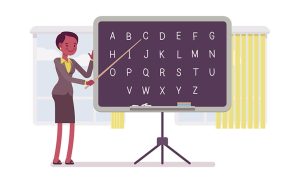In group classes, cultural differences can sometimes blend into the background noise of classroom dynamics. But in one-on-one lessons, these differences become the entire context of your teaching relationship. Every silence, every hesitation, every burst of enthusiasm is magnified and directly related to how your student’s cultural background shapes their approach to learning.
Unlike in group settings where students can observe others and adjust their behavior accordingly, private lesson students have nowhere to hide their cultural learning preferences—and nowhere to see alternative approaches modeled by peers from different backgrounds.
The Big Four: Cultural Patterns That Shape Learning
1. Authority and Teacher Relationships
High-Authority Cultures (common in many Asian, Middle Eastern, and some European contexts): Students expect the teacher to lead, direct, and provide answers. They may interpret requests for their opinions as signs of teacher incompetence.
Low-Authority Cultures (common in Scandinavian, North American, and some Western European contexts): Students expect collaboration, debate, and to be treated as equals in the learning process.
What this looks like in practice:
- A Korean student might never interrupt you or ask questions because it’s considered disrespectful
- A Dutch student might challenge your explanations or suggest alternative approaches
2. Individual vs. Collective Learning Styles
Individual-Focused Cultures: Students are comfortable being singled out, competing, and standing out from others.
Collective-Focused Cultures: Students prefer harmony, group consensus, and avoiding individual attention.
In one-on-one lessons, this manifests as:
- Some students thrive on personal attention and customized challenges
- Others feel uncomfortable being the sole focus and may need you to reference “what other students typically do”
- Certain students need frequent reassurance that their answers are similar to what others would say
3. Direct vs. Indirect Communication
Direct Communication Cultures: Students expect clear, explicit feedback and instruction.
Indirect Communication Cultures: Students communicate through context, implication, and expect you to read between the lines.
Teaching implications:
- Students from direct cultures may interpret gentle corrections as unclear or unhelpful
- Students from indirect cultures may feel attacked by straightforward error correction
- Praise and criticism need to be calibrated to cultural expectations
4. Process vs. Outcome Orientation
Process-Oriented: Focus on methodology, understanding the “why” behind rules, and systematic learning.
Outcome-Oriented: Focus on immediate practical application and results.
This affects how students approach:
- Grammar explanations (want detailed rules vs. just want to know what sounds right)
- Homework preferences (systematic practice vs. real-world application)
- Error correction (understanding patterns vs. just getting it right)
Moving Forward
The most successful ESL teachers aren’t those who ignore cultural differences or treat all students the same. They’re the ones who see cultural learning differences as valuable information that helps them teach more effectively.
Start with one student. Pay attention to their cultural learning cues. Adapt your approach. Notice what works. Then apply those insights to future students from similar cultural backgrounds while remembering that every individual is unique.
Your willingness to navigate these cultural learning differences isn’t just about being a better teacher—it’s about creating an environment where your students can truly thrive while maintaining their cultural identity.
Because at the end of the day, the goal isn’t to change who they are. It’s to help them express who they are more effectively in English.






